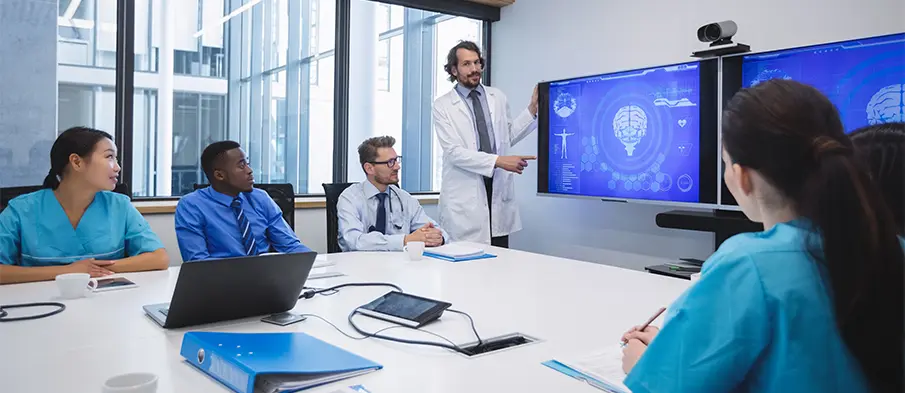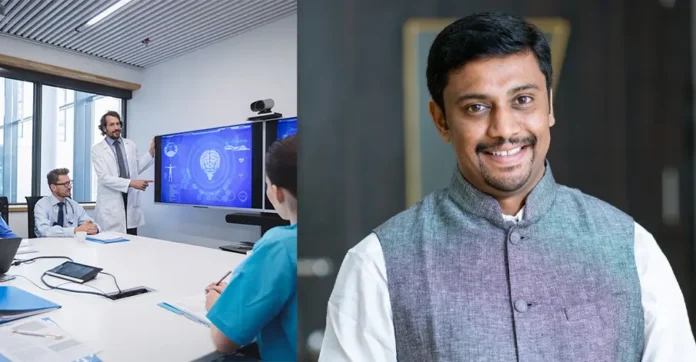
Medical education has always preserved a delicate balance among theory and practice, science and empathy, knowledge and intuition. Modern-run medical education appears to see the signs of change in the era of digital technology. Laboratories like simulation labs, artificial intelligence, virtual reality, internet anatomy, are increasingly becoming part of the normal curriculum. While technology is advancing, however, the significance of traditional mentorship modes, internships, and old teaching methodologies cannot be placed aside. The best approach appears to be neither entirely traditional nor entirely digital but rather a proper balance between the two, i.e. during the use of the best in medical theories while using newly validated technology to foster learning with the circuit.
The Strength of Tradition in Medical Education
Conventional medical education has undergone numerous changes and, in the process, has prioritized human contact, preceptorship as well as close clinical exposure. Generations of doctors have learned technical skills as well as clinical compassion and intuition on lectures, ward rounds, dissection labs, and at bedside teaching.
In a traditional setup, students see senior doctors interact with real patients, working through the sometimes slow-growing confidence that allows them to perform some of the more rudimentary acts of diagnostic and treatment themselves. Such exposure builds critically at those junctures when a physician’s ability to think, interact with a patient, or exercise judgment is critical. The value of this kind of in-person mentorship is immeasurable. Observing a senior clinician guide an anxious patient through a diagnosis or make life-and-death decisions in the setting of an emergency will create impressions far beyond any textbook.
But traditional teaching has its own shortcomings. Most special clinical cases are only accessible by chance, whereas large groups of students might compromise the quality of exposure they get. Not all students learn uniformly; thus, the static nature of the lecture format could leave some students with special learning needs behind when it comes to grasping complex subject matter.
The Rise of Technology in Medical Training
Technological innovations have now taken center stage in bridging some of the gaps that traditional education has. In high-fidelity simulations, students are taught procedures in a safe, controlled environment well before ever laying hands on an actual patient. These simulations can affordably simulate highly complex conditions such as emergencies. This gives students the confidence and muscle memory they need when working with real patients.
VR and AR are revolutionizing the training in anatomy, as they can deliver an enhanced experience as they enables 3D representation of the human body systems. They do not need to rely on the cadavers only, but can interact with the anatomic models in a virtual environment, rotate organs, or simulate performing surgery in varied perspectives. This kind of experiential learning improves retention and allows repetition with no logistical restrictions.
Students are also provided with flexibility and access to resources all over the world by use of online and e-learning modules. They are able to view recorded lectures, to take quizzes and even participate in virtual grand rounds at other institutions across the world. They also allow educators to track progress as well as tailoring feedback to each student and modifying teaching approaches according to learning levels more easily.
There are, however, no silver bullet technologies. Digital tools may not always be very good at teaching bedside manners or the subtle nuances of patient care.
Virtual patient cannot guide the student to read the fear in the eyes of a patient nor reacts to hesitation of a voice. Excessive dependence on screens can also cause either a lack of peer contact, possibility of being mentored, or learning together.
The virtual patient will never be able to teach the student how to detect fear in the eyes of a patient nor the falter in the voice. Excessive dependence on screens can also cause either a lack of peer contact, possibility of being mentored, or learning together.
Building a Balanced, Hybrid Model
Future medical education will be the most promising only if it combines the emotional- and tactile-depth legacy of the old with the precision and reach of the new device technologies. The hybrid approach has already been embraced in many medical institutions, adding simulation-based learning to their clinical rotations and online blended modules with live, discussion-based seminars.
As an example, students may experience several weeks of practice in a VR simulation lab before a surgical rotation in suturing techniques and then scrub in for a real operation. They will have muscle memory and clarity of theory so that they can focus on the live experience. In this way, an online anatomy platform can bring the students up to speed before they enter a cadaver for dissection, maximizing the limited time that they have in the lab.
Technology is also helpful in overcoming logistical constraints. For instance, rural medical colleges which may not have an established specialized faculty could host a series of virtual workshops by various experts to deliver quality education to their students. Educators could also give their students quality video content or online assignments as the time-consuming lecture-free option of delivery and leave them with time to spend in more interactive personalized teaching in person.
Other than that, the hybrid models encourage a sense of learning ownership to the students. With self-paced e-learning modules, a student would be in a position to visit the concepts as he/she wants to, and during face-time classes, they are more interested in using knowledge and clarifying the issues. Learning apps, mobile, and digital flashcards, in combination with peer collaboration platforms, make studying a less stressful activity, making it more fun in the process.
Preparing Future Doctors for a Digital World
Incorporating technology with traditional methods not only implies training techniques but also prepares future doctors to practice in a rapidly changing healthcare scenario. Technology is being heralded with deep integration into clinical workflows, and telemedicine and AI-assisted diagnostics are the order of the day. Digital tools, data systems of clinical practice, and remote communication skills will soon become the sine qua-non for the next-generation healthcare professionals.
Blending technology with medical teaching makes the students more agile in thinking, technologically savvy, and broaden their adaptability. It also fosters a culture of continuous learning amongst them. In an age when medical knowledge is said to double at an ever-rising pace, doctors are required to keep updated with not only text material but also via online seminars, digital journals, and AI-based resources.
However, it is important to ensure that these future doctors will never lose focus on the human side of medicine. They must be taught to balance efficiency and compassion, data and discernment, and speed and attentiveness. This type of balance can barely be provided by educators who personify such values and manifest them in practice and in a curriculum that assigns equal importance to a student’s cultivation of clinical reasoning, patient narrative-taking, and ethical reflection.
Conclusion
Medical education is at a crossroad. While technology provides robust modes of enhancement for understanding and skills acquisition, the heart and soul of medicine-human interaction, critical thought, and compassionate care, have to rely and interact with age-old forms of experiential learning. As we mindfully bridge the two, we can give rise to a breed of doctors who will be capable and humane. The aim is not to allow one to replace the other but to allow each one to enhance and enrich the other. With this, we hope that medical teaching will indeed evolve but retain its essence.






